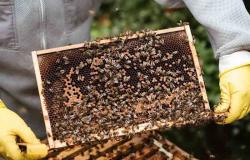Study on nanocellulose by the Polytechnic of Milan and the University of Siena. Cellulose nanofibers represent a promising resource for multiple industrial sectors, but what impact do they have on the marine environment? Research published by the prestigious journal “Environmental Science Nano” of the Royal Society of Chemistry recently addressed this issue in a study on marine organisms considered sentinels of the quality of the sea, mussels or better known as mussels.
The work was conducted jointly by the OSCMLab research groups of the Department of Chemistry, Materials and Chemical Engineering “G. Natta” of the Polytechnic of Milan (dr. Laura Riva and prof. Carlo Punta), and EcoBiomLab, of the Department of Physical, Earth and Environmental Sciences of the University of Siena (dr. Tatiana Rusconi and prof. Ilaria Courses), in collaboration with Prof. Montserrat Solè of the Instituto de Ciencias del Mar in Barcelona.
Two types of cellulose nanofibers, oxidized and non-oxidized, were analyzed to evaluate their ecotoxicological impact on the Mediterranean mussel and establish their safety for the marine environment.
The results of the study on nanocellulose by the Polytechnic of Milan and the University of Siena have highlighted how cellulose nanofibers can affect the immune response of the mussel and alter the functionality of the gills following physical interactions (surface adhesion). However, no toxicities capable of endangering the survival of the species nor stress conditions capable of altering its response to environmental changes were observed.
The experimentation conducted in the laboratory also allowed us to exclude possible changes in the pH and salinity of sea water following the release of the nanofibres, mimicking realistic exposure scenarios such as those associated with their transport with sewage wastewater in coastal marine areas.
“This study raises fundamental questions on the interaction between cellulose nanofibres and marine biodiversity – declares Prof. Ilaria Corsi of the Department of Physical, Earth and Environmental Sciences of the University of Siena – stimulating the need for further research for an ecological risk assessment that takes into account chronic exposure times and multiple stress conditions such as those that now affect the marine-coastal areas of the Mediterranean”.
“At the same time – adds prof. Carlo Punta of the Department of Chemistry, Materials and Chemical Engineering “G. Natta” of the Polytechnic of Milan – opens the door to responsible use of this nanomaterial, of growing interest for sustainable applications in the cosmetics, paper, packaging and paint sectors, as well as in the construction and automotive industries.
Link to the work published in the journal “Environmental Science Nano”: https://pubs.rsc.org/en/content/articlelanding/2024/en/d3en00135k.
Tags: Nanocellulose seas study University Siena





